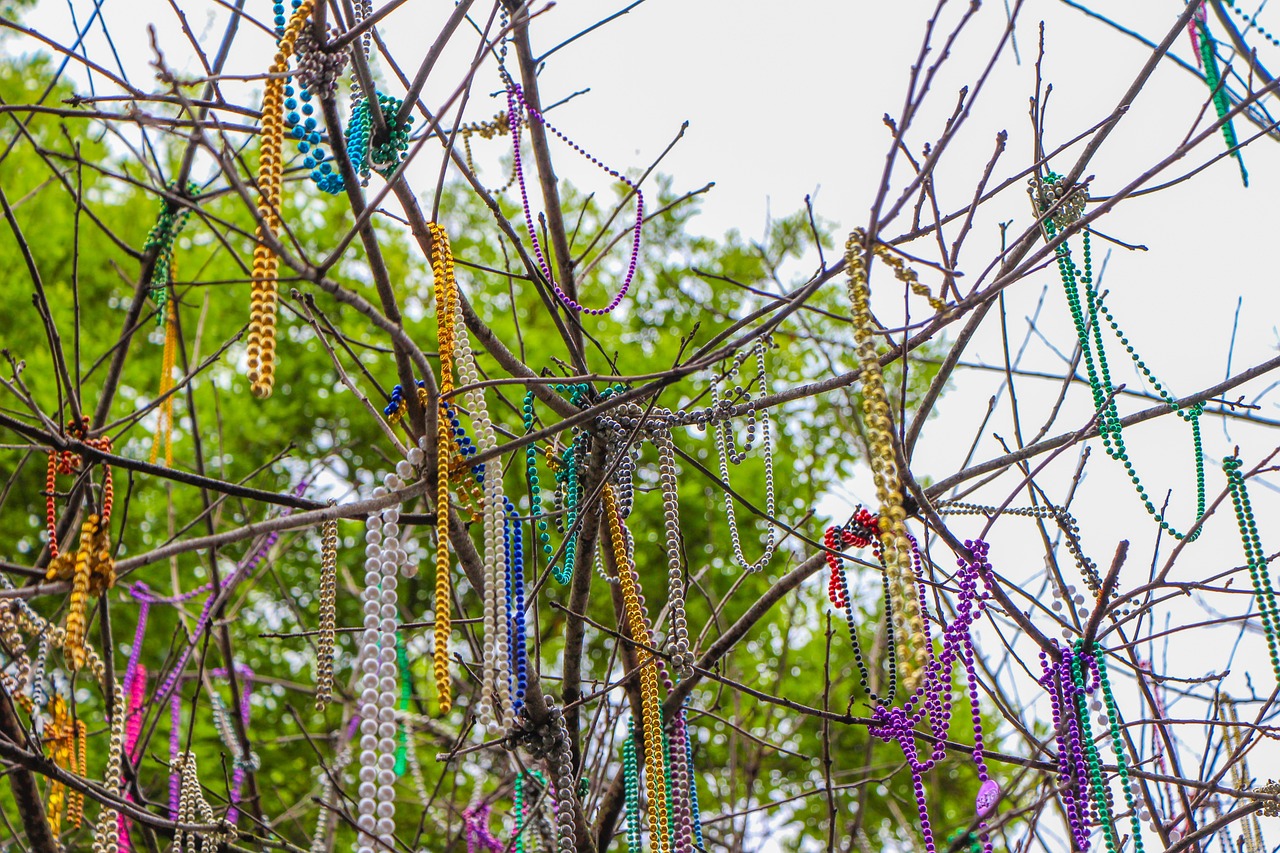The term Mardi Gras is synonymous with revelry and excess. It actually means Fat Tuesday in French and marks the end of the Carnival season that begins on January 6, or the Twelfth Night, of which feasting and celebration are mainstays.
Ash Wednesday follows Fat Tuesday and this is when Christian celebrants are supposed to restrain their earthly desires in preparation for pre-easer fasting and the austere season of Lent.
The Carnival period would not be complete without parades featuring lavish floats, parties, or balls as well as king cake.
Carnival parades are arguably the most recognizable and popular feature of the period, and each “krewe” or company that puts on the parade takes their duty very seriously.
In explaining the origin of Mardi Gras beads, it was thought that the Rex krewe was the krewe responsible for the first time these beads, made from glass, were used in a parade.
As parade spectators would surely know, these bead necklaces, or throws, signify good luck and are among some of the cheap trinkets thrown into the waiting crowd by members of the Krewe.
Contrary to popular belief, spectators are not obliged to bare themselves when begging for throws.
No one really knows exactly why, but Mardi Gras beads are extremely popular throws. The bead necklaces are thought to represent royalty or the aristocracy as personified by a krewe on their parade floats.
In turn, the spectators and revelers begging for throws symbolize “the people”.
The connection to aristocracy was more evident in the 1840s when krewe members would actually dress as royalty and carried out the English Renaissance-era custom of “throwing the beads”.
Anyone who caught the eye of a Krewe member would receive a string of beads and sugar-coated almonds. As stated earlier, the origin of Mardi Gras beads began with glass ones.
However, these were rather heavy and had the potential to injure people. As such, each krewe began to use plastic beads instead. These are safer, lighter, not to mention cheaper.
The longer Mardi Gras beads are more popular than the clear ones. The most significant colors to be used for Mardi Gras beads are purple, signifying justice, green for faith, and gold for power.


